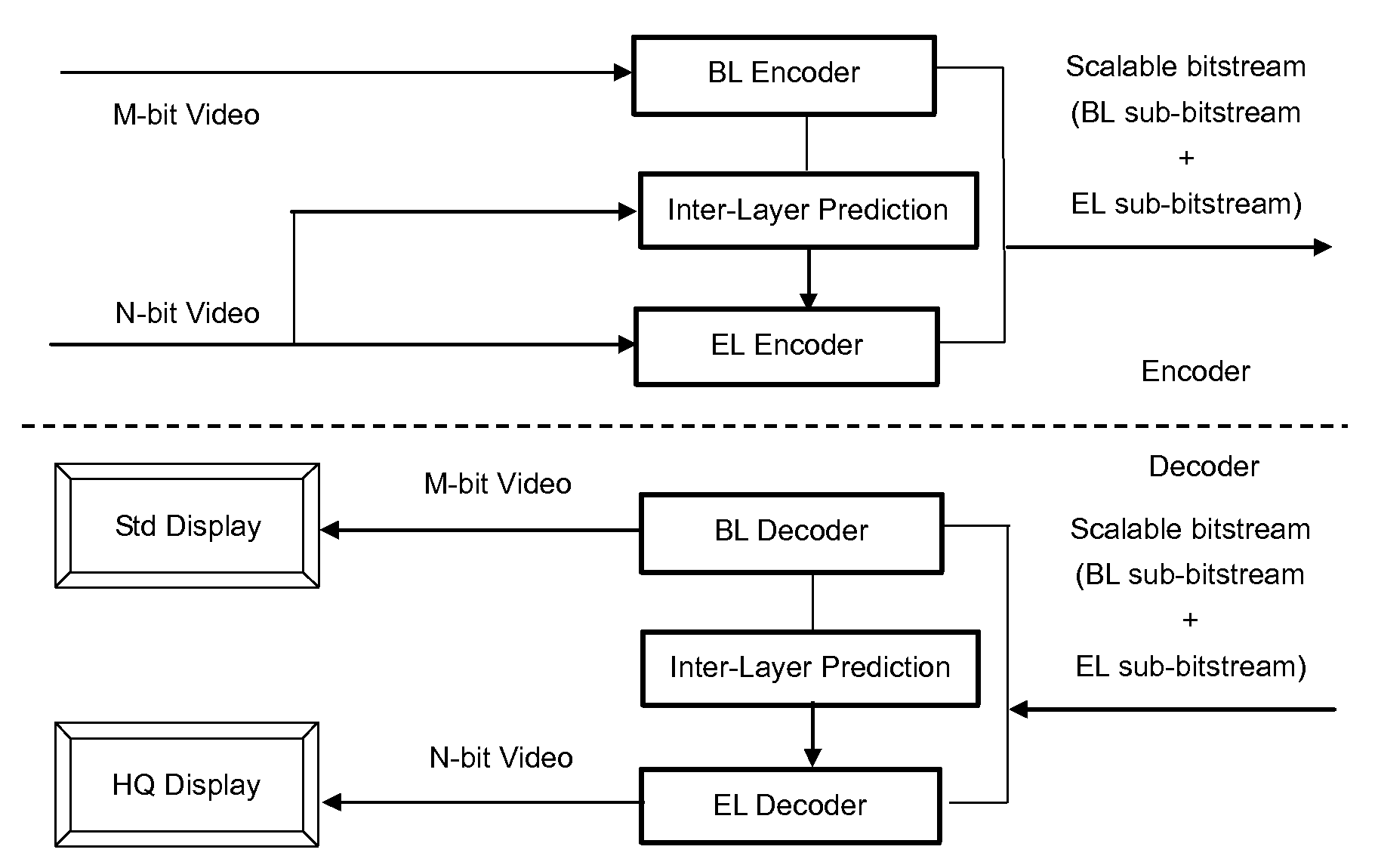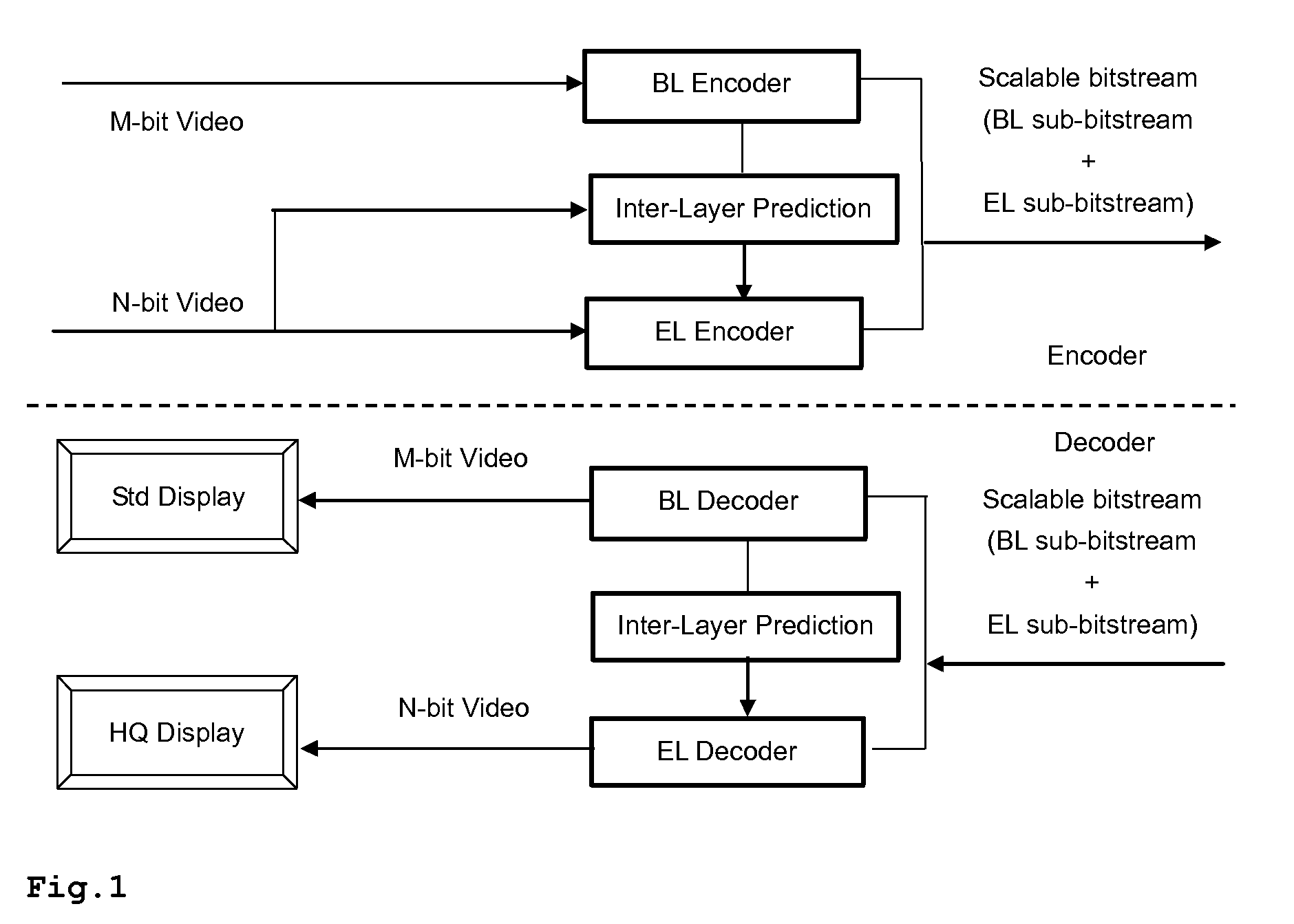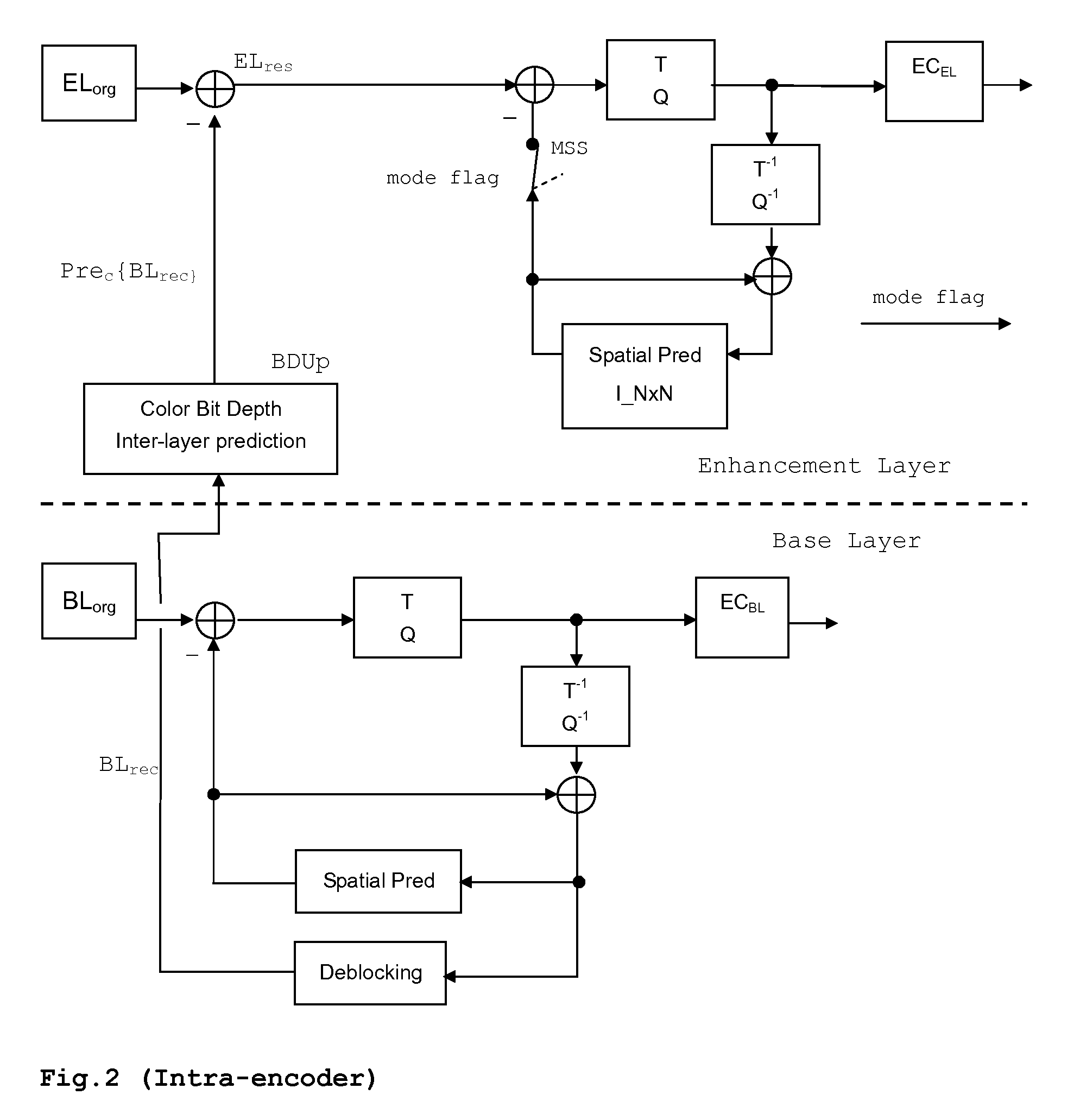Method and apparatus for encoding and/or decoding bit depth scalable video data using adaptive enhancement layer residual prediction
a video data and adaptive enhancement technology, applied in the field of digital video coding, can solve the problems of inflexible above-mentioned redundancy reduction possibilities, achieve the effects of increasing the number of values, enhancing the possibility of fine-tuned color reproduction, and gradual color differences
- Summary
- Abstract
- Description
- Claims
- Application Information
AI Technical Summary
Benefits of technology
Problems solved by technology
Method used
Image
Examples
Embodiment Construction
[0047]As shown in FIG. 1, two videos are used as input to the video encoder: N-bit raw video and M-bit (M8), are input to the encoder, and the output is a scalable bit-stream. It is also possible that only one N-bit color data stream is input, from which an M-bit (M<N) color data stream is internally generated for the BL. The M-bit video is encoded as the BL using the included H.264 / AVC encoder. The information of the BL can be used to improve the coding efficiency of the EL. This is called inter-layer prediction herein. Each picture—a group of MBs—has two access units, one for the BL and the other one for the EL. The coded bitstreams are multiplexed to form a scalable bitstream. The BL encoder comprises e.g. an H.264 / AVC encoder, and the reconstruction is used to predict the N-bit color video, which will be used for the EL encoding.
[0048]As shown in FIG. 1, the scalable bit-stream exemplarily contains an AVC compliant BL bit-stream, which can be decoded by a BL decoder (conventiona...
PUM
 Login to View More
Login to View More Abstract
Description
Claims
Application Information
 Login to View More
Login to View More - R&D
- Intellectual Property
- Life Sciences
- Materials
- Tech Scout
- Unparalleled Data Quality
- Higher Quality Content
- 60% Fewer Hallucinations
Browse by: Latest US Patents, China's latest patents, Technical Efficacy Thesaurus, Application Domain, Technology Topic, Popular Technical Reports.
© 2025 PatSnap. All rights reserved.Legal|Privacy policy|Modern Slavery Act Transparency Statement|Sitemap|About US| Contact US: help@patsnap.com



